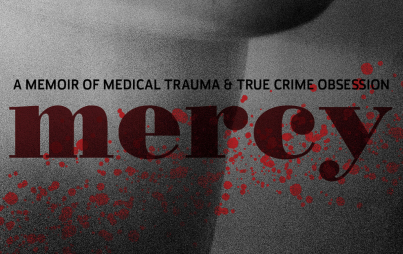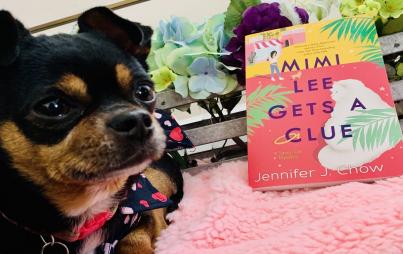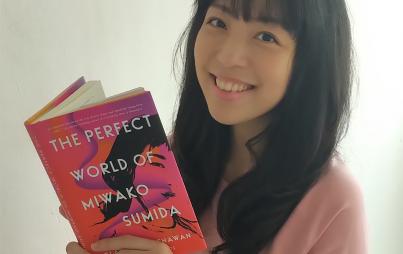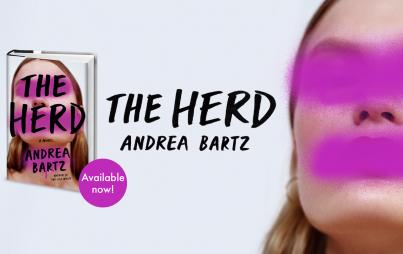
It seemed the realm of books — the realm I loved — didn’t have a place for queer fat girls to be a heroine or adventurer.
Growing up, I don’t remember a specific moment when I realized I was considered fat. I never went through that gawky, all knobby knees and skinny limbs phase that seems to mark the growth of a child universally. The only thing I knew about my body was that it had just enough cushion to ease the fall from the jungle gym and swings. It carried me when I went on adventures with friends. It did what it was supposed to do.
Surprisingly, my first hint that I was different came from the books I read. Heroines who were often described as thin, petite, or even just small stood out starkly on the covers with their hands fisted on their hips.
It seemed the realm of books — the realm I loved — didn’t have a place for a plump heroine or adventurer.
The topic of diversity in the publishing world has been a hot topic in recent years, with YA and middle grade leading the pack. With organizations like We Need Diverse Books advocating the need for better representation in books created for children, more kids are reading books with characters like them. Books are finally starting to show and reflect the diverse world we live in — a world with different skin tones, religions, and body types.
As a bisexual, biracial, plus-sized woman, this is a cause near and dear to my heart. I am filled with hope at the new statistics presented by authors like Malinda Lo, who has been following the publishing of LGBTQ books since 2003. But sadly, we still have a long way to go with representation, especially regarding plus-sized protagonists.
In the blog Teen Lit Rocks, creator Sandie Chen asks the question, “Where are the big girls in YA?” and goes on to describe the image issues YA heroines often face: “In most YA books some girls worry about their flat breasts and wide hips or their lack of muscles or their overly prominent muscles, but almost all of them fall within the boundaries of ideal weight.” All body images should be respected and represented, but again, the teen girls who don’t fit into this model are left feeling like their insecurities don’t matter, that it’s not okay to be fat.
Books are finally starting to show and reflect the diverse world we live in — a world with different skin tones, religions, and body types.
The struggle lies in the message that plus-sized bodies are not healthy, not desirable, and not worthy. We see it in the countless diet fads, the annoying concept of getting beach-body ready, and the idea that plus-sized bodies are only allowed in some spaces. For a long time, the only plus-sized narrative people were willing to see was a weight loss arc. To sway this way of thinking, we need to do away with the idea fat people need to overcome something to be people.
You Might Also Like: I’m Here, I’m Queer, and I Have Nothing To Wear: The Queer Style Blogs that are Saving My Life Right Now
Julie Murphy, New York Times bestselling author of the book Dumplin’, a story about an unapologetic fat girl, talks about the difficulty of writing plus-sized characters in an industry that is starving for representation: “One of the biggest things I try to get across is that my books are about fat people as human beings, [but] they comprise so much more.” It’s a problem many writers of diverse stories face. If they become the sole representation of an entire identity, there are bound to be disappointed readers. One story simply cannot carry everyone's experiences.
Some books get it right. In the YA novel, The Summer of Jordi Perez and the Best Burger in Los Angeles by Amy Spalding, Abby Ives thinks she is destined to be the sassy best friend to her thin best friend, confident that there could be no romance in her future. Add the fact that Abby is queer and her love interest Jordie is Latinx, and you get a nuanced and intersectional love story.
The Summer of Jordi Perez and the Best Burger in Los Angeles addresses the struggles of being a plus-sized teen without making Abby’s weight something she has to overcome. In fact, the book almost takes a comedic stance on Abby’s mother, the only character who has an issue with her weight. There is no room to dispute that her thinking is harmful.
At twenty-five years old, it was wonderful to finally read a book that spoke to my different identities and was nothing more than a light romantic read amongst all the queer deaths and fat shaming we see in other works. Throughout the entire novel, I kept tensing, waiting for the cruel punchline to shatter the love story. But the problems Abby Ives encounters have nothing to do with her waist size or sexual orientation. She has anxieties about friendships and relationships. She worries about the future. These are problems any seventeen-year-old — fat or thin — experience.
Dumplin’ is being made into a movie, and plus-sized characters like Abby Ives are taking the world by storm — large, loud, and not afraid to take up the space they need.
I wish I had them when I was gazing at the glossy covers of my books and wondering why I simply couldn’t look like the characters I loved. But there is a growing definition in what defines a heroine now, and it’s diverse.








